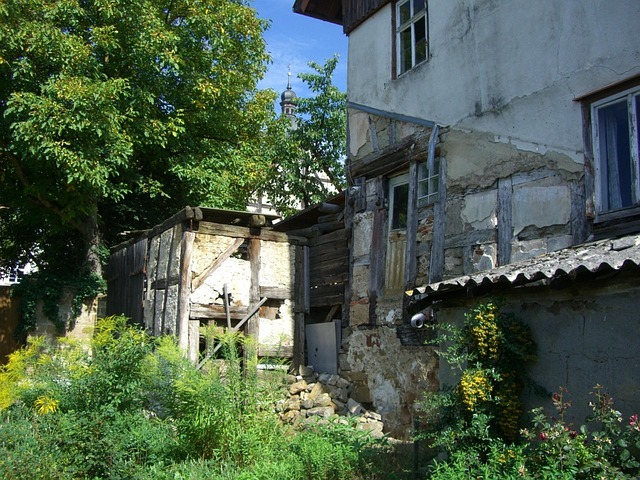Optimizing your backyard through strategic space zoning transforms it into a versatile oasis. By dividing your yard into distinct areas like patios for dining, gardens for growing, and private retreats for relaxation, you enhance both functionality and aesthetics. These backyard layout ideas cater to various activities and preferences while ensuring optimal flow and privacy. Efficient planning considers natural activity flows, making each zone easily accessible and contributing to a seamless outdoor living experience, whether it's quiet reflection or vibrant entertaining.
Creating private zones within open backyard designs offers a harmonious blend of functionality, aesthetics, and tranquility. In today’s digital era, outdoor spaces have evolved into vibrant hubs for relaxation, entertainment, and connection with nature. Understanding the concept of outdoor space zoning is pivotal in maximizing these areas’ potential. This article explores effective strategies to transform your backyard into a multi-purpose oasis, featuring dedicated zones for various activities while enhancing privacy and ambiance through thoughtful design and clever use of both hardscapes and softscapes. Discover practical tips for backyard planning and layout ideas that will optimize flow, ensuring every corner serves a unique purpose.
Understanding Outdoor Space Zoning
Creating a well-zoned outdoor space is an essential aspect of backyard design that can significantly enhance your backyard’s functionality and overall appeal. Outdoor space zoning involves dividing your backyard into distinct areas, each with its unique purpose, ensuring a seamless flow between different functions like entertaining, relaxing, or cultivating a garden. With thoughtful planning, you can transform your open backyard into a multi-purpose oasis tailored to your lifestyle and preferences.
Backyard layout ideas often revolve around optimizing space to accommodate various activities. Consider defining areas for patios and gardens, creating private nooks for quiet contemplation, or setting up zones for outdoor kitchens and entertaining. This strategic approach allows you to make the most of your outdoor living area design while ensuring each section serves a specific need. By incorporating patio and garden zoning, you can easily transition from a relaxed afternoon in the garden to an evening gathering with friends, all while enjoying the beauty and privacy of your well-planned backyard.
– Definition and importance of outdoor space zoning
Creating a well-zoned outdoor space is an essential aspect of modern backyard design. Outdoor space zoning involves dividing your backyard into distinct areas, each serving a specific purpose, thereby enhancing overall functionality and flow. This strategy allows homeowners to maximize their outdoor living areas, catering to various activities and aesthetics. For instance, you could designate a quiet reading nook tucked away from the bustling patio area or a vibrant garden spot for entertaining guests.
By implementing these backyard layout ideas, you can create a seamless transition between different zones, ensuring a balanced and appealing backyard design. Consider the placement of patios, gardens, seating areas, and even play spaces to suit diverse needs and preferences. Optimizing the flow between these functional backyard zones not only adds value to your property but also provides a peaceful and vibrant sanctuary right in your own backyard, catering to every occasion and moment of relaxation or entertainment.
– Benefits for privacy, functionality, and ambiance
Creating private zones within open backyard designs offers a multitude of benefits that enhance both functionality and ambiance. By strategically dividing your outdoor space into distinct areas, you can cater to various activities and preferences, from quiet relaxation to lively gatherings. This approach not only improves privacy but also allows for better flow optimization in the backyard layout ideas.
Each zone can be tailored to serve specific purposes, making the most out of your outdoor living area design. For instance, a secluded corner with lush greenery and comfortable seating provides a serene retreat, while an open patio or garden zoning facilitates social interactions and entertaining. These functional backyard zones cater to different needs, ensuring that every moment spent in your outdoor space is enjoyable and memorable, regardless of the activity or company.
Backyard Layout Ideas for Effective Zoning
Creating a well-zoned backyard is an excellent way to maximize your outdoor space and enhance its functionality. Backyard layout ideas focus on dividing your yard into distinct areas, each serving a specific purpose. This approach allows for better organization and ensures that every corner of your garden contributes to your overall outdoor living experience. Outdoor space zoning can range from simple to complex, depending on your preferences and available area.
One popular backyard design tip is to incorporate multi-purpose zones. For instance, designate an area for dining and entertaining with a patio or deck, complete with comfortable seating and a grill. Nearby, create a garden zone for herbs, vegetables, or flowers, offering both beauty and freshness to your meals. Additional functional backyard zones could include a quiet reading nook, a play area for kids, or even a home office or studio. Backyard planning should consider the natural flow of activities, ensuring each zone is easily accessible and contributes to a seamless outdoor living experience.
Optimizing your backyard’s flow through strategic outdoor space zoning not only enhances privacy and functionality but also transforms the entire ambiance. By incorporating well-thought-out backyard layout ideas, such as dedicated areas for dining, relaxation, and play, you can create a harmonious multi-purpose backyard design. Whether you’re planning a patio and garden or simply reorganizing existing spaces, these backyard planning tips ensure every zone serves a purpose, making your outdoor living area a vibrant and inviting space for all.
